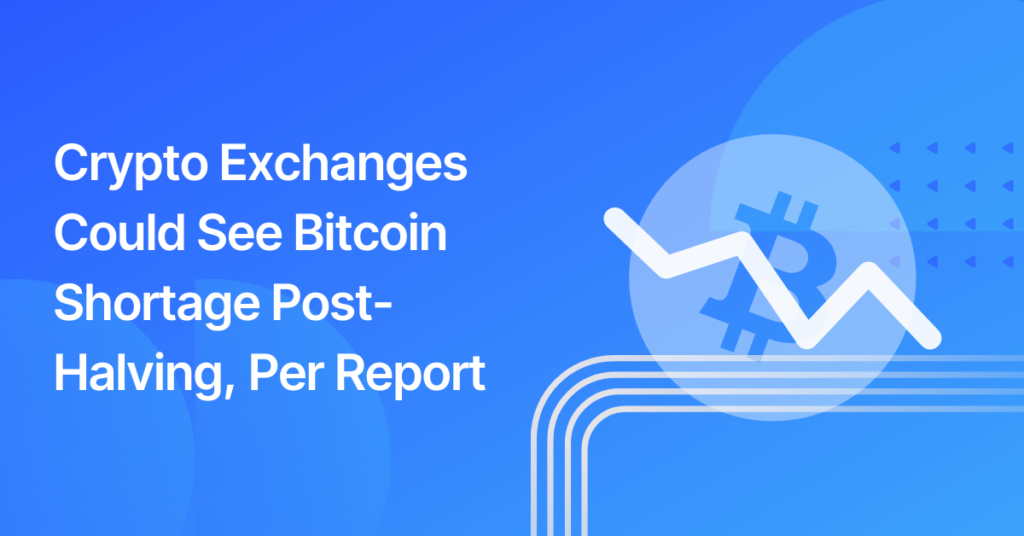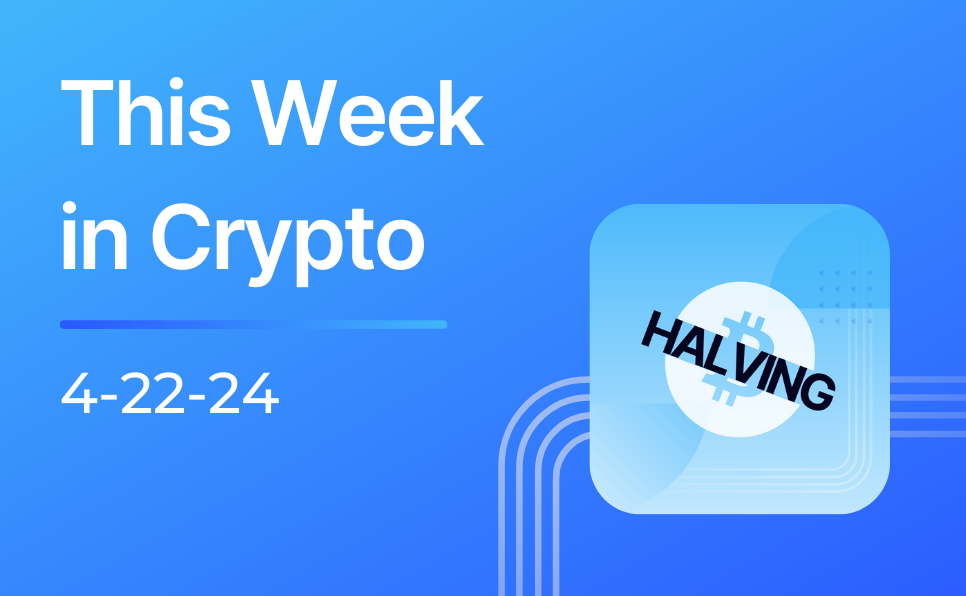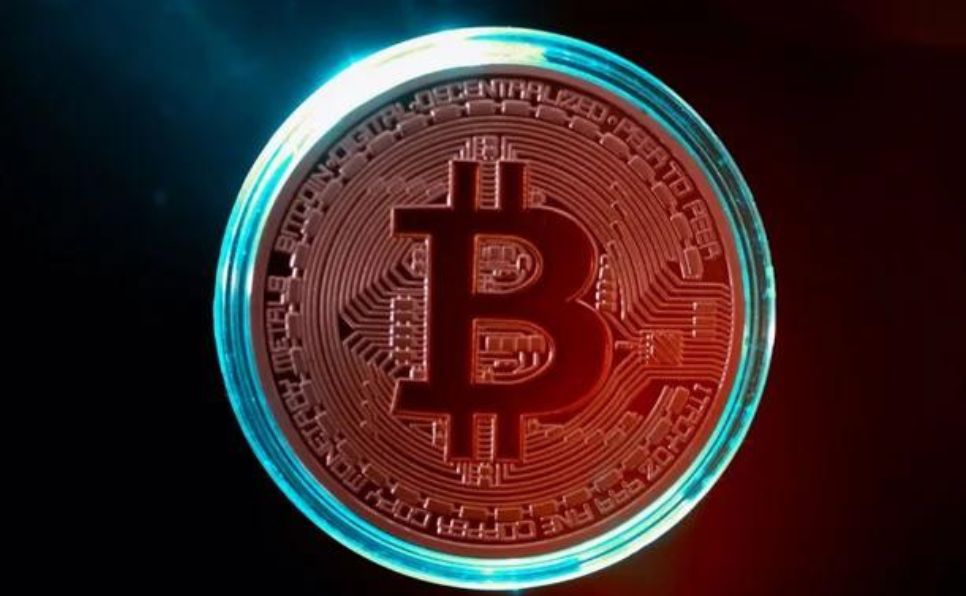Welcome to this week’s edition of This Week in Crypto! In our spotlight this week, we cover the events shaping the cryptocurrency landscape, led by Bitcoin’s latest halving, which has drastically reduced mining rewards, yet propelled mining revenue to historic highs. We’ll explore how this pivotal halving event is influencing Bitcoin’s availability on exchanges, with some reports pointing to a shortage within the next nine months due to sustained demand from U.S. Bitcoin ETFs. As these dynamics unfold, we unpack what these developments may mean for the broader market.

Bitcoin Network Successfully Completes Fourth Halving
Bitcoin has successfully completed its fourth halving, a pre-scheduled event in which mining rewards are halved, reducing the payout to 3.125 BTC per block, down from 6.25 BTC. This latest halving occurred after the mining of the 840,000th block, continuing a tradition designed to create digital scarcity and curb inflation within the network. As a result, the total supply of Bitcoin creeps closer to its 21 million cap, with over 19.6 million coins already in circulation. This system, introduced by Bitcoin’s founder, Satoshi Nakamoto, aims to ensure that Bitcoin’s supply runs out around the year 2140. The event, which affects the rate of new Bitcoin entering the market, is watched closely for its potential impact on Bitcoin prices, which hovered around $64,000 shortly after the halving.
The halving poses challenges for Bitcoin miners, as the reward reduction effectively doubles the cost of mining each Bitcoin, intensifying competition among miners who secure the network by solving complex mathematical problems. Large mining companies have been preparing for the change, with significant investments to boost their operations. For instance, Marathon Digital recently acquired a 200-megawatt mining facility in Texas, while Riot Platforms expanded its hash rate with a substantial purchase of mining rigs. These strategic moves are critical as the reduced rewards increase operational costs, potentially squeezing out smaller miners and reshaping the competitive landscape of Bitcoin mining.

Bitcoin Mining Revenue Hits New All-Time High of $107.7M
Bitcoin mining revenue soared to a record-breaking $107.7 million on April 20, 2024, driven by high transaction fees and mining rewards on the day of Bitcoin’s fourth halving. More than 3,000 people paid 37.7 BTC in fees—amounting to ~$2.4 million—to secure a spot in the historic 840,000th block, which reduced mining rewards to 3.125 BTC per block. This frenzy was partly fueled by the launch of the Runes Protocol by Bitcoin Ordinals, coinciding with the halving event. The block logged 3,050 transactions, costing each user an average of nearly $800 to participate.
This surge eclipsed the previous peak in miner revenue of $78.7 million recorded on March 11, when Bitcoin’s price hit a new high of $71,415. However, the excitement was short-lived as transaction fees plummeted the following day, dropping from a record average of $128 to just $8-$10 for medium-priority transactions, reflecting a swift decline in post-halving hype. This fluctuation highlights the volatile nature of Bitcoin transaction costs and miner earnings, which are closely tied to market prices and major network events like halvings.

Crypto Exchanges Could See Bitcoin Shortage Post-Halving, Per Report
According to a recent report by Bybit, Bitcoin supply on cryptocurrency exchanges is projected to run out in nine months due to the halving and sustained demand from U.S. Bitcoin exchange-traded funds (ETFs). This depletion is estimated using a significant daily inflow of $500 million to Bitcoin Spot ETFs, leading to roughly 7,500 bitcoins being withdrawn from exchange reserves daily. Bybit’s analysis indicates that if these trends continue, the remaining Bitcoin reserves, which recently fell to a near three-year low of 1.94 million BTC, will be completely exhausted in less than a year. The halving event and ongoing ETF accumulations are reshaping Bitcoin’s supply dynamics, potentially leading to scarcity on exchanges.




